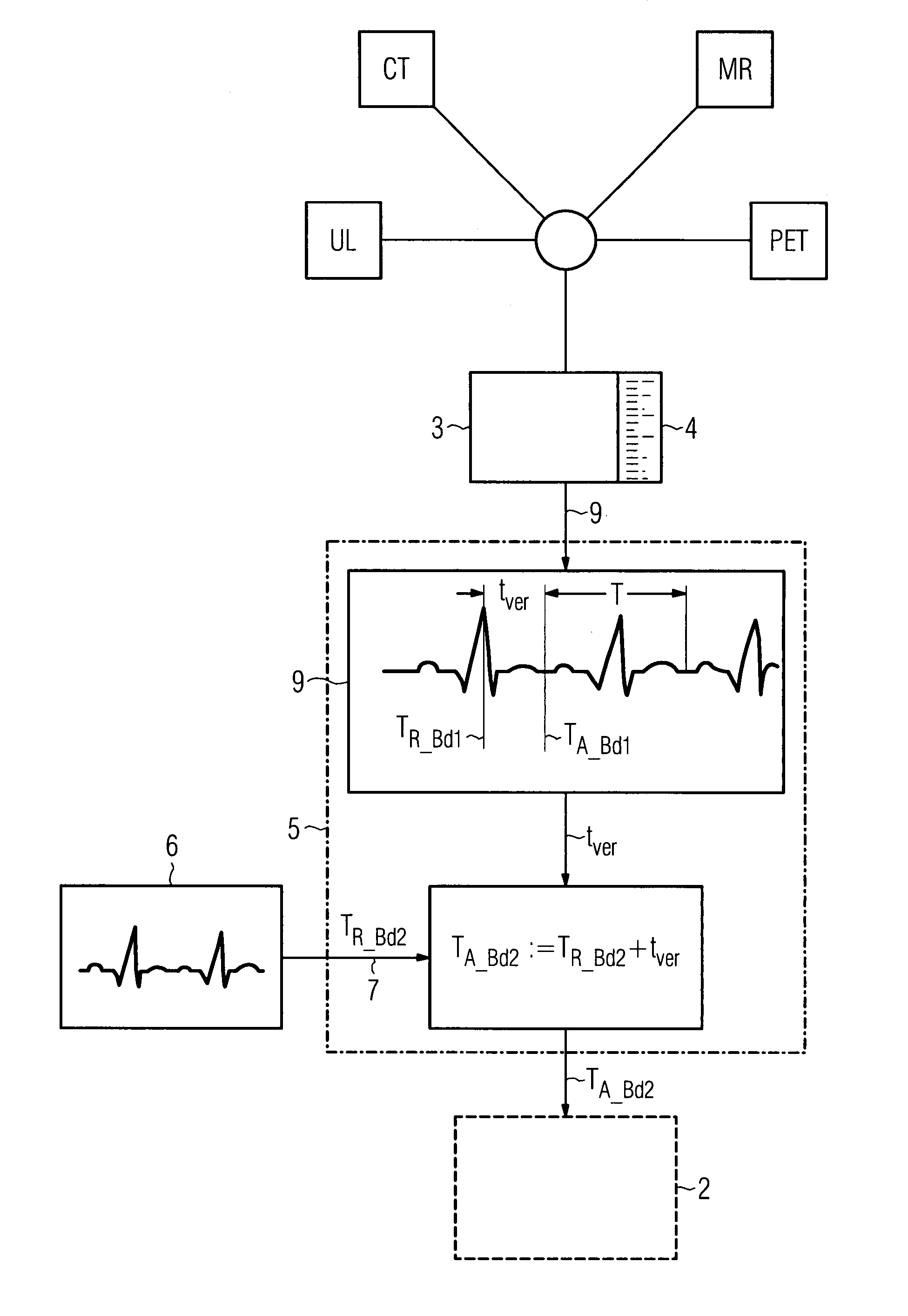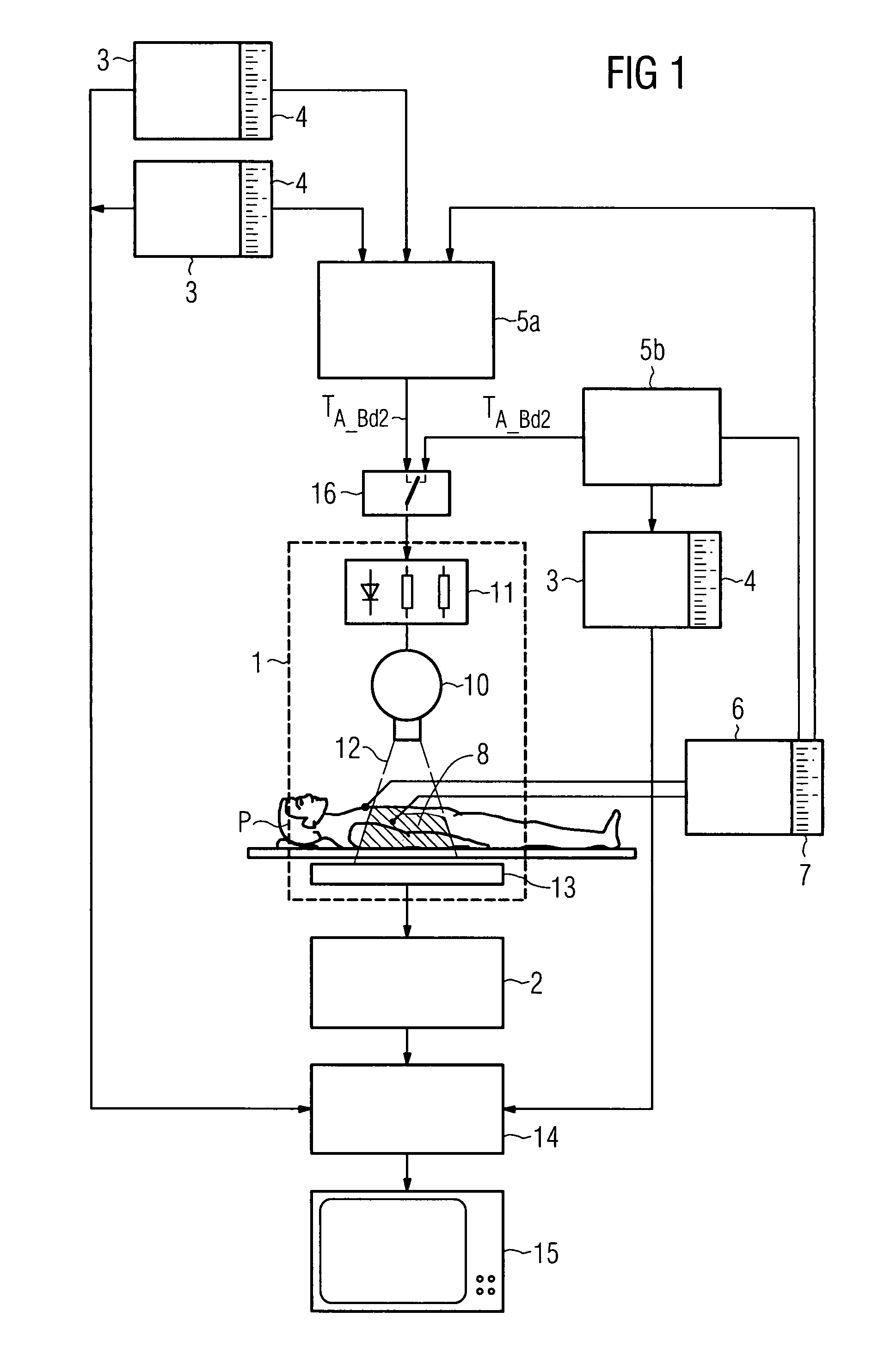Device and method for synchronizing an image capture device with a pre-operative image data set
a technology of image capture device and image data, which is applied in the field of device and method for synchronizing an image capture device with a first image data set, can solve the problems of unsuitable image acquisition, time-consuming and generally also error-prone process, and the above-mentioned problem of change of position becomes even more acute, so as to reduce radiation dose, reduce the operating cost and minimize the recording effect of the image capture devi
- Summary
- Abstract
- Description
- Claims
- Application Information
AI Technical Summary
Benefits of technology
Problems solved by technology
Method used
Image
Examples
Embodiment Construction
[0025]The image capture device 1 shown in FIG. 1 is used for recording a second image data set 2 of a patient P that is synchronized to a first image data set 3. An x-ray tube 10 is operated by an x-ray generator 11. The x-ray tube 10 emits an x-ray beam 12 which passes through a patient P in the area under examination 8 and is incident on an x-ray detector 13 in attenuated form depending on the transparency of the patient P and creates an x-ray image. The absorption of the x-radiation 12 by the patient P follows an exponential function. The x-ray detector 13 converts the x-ray image into electrical signals and produces a second image data set 2. In an associated digital image processing system 14, the second image data set 2 and the first, generally pre-operative image data set 3 are processed and made available to one or more output units 15 to reproduce an overlaid image. In order that the image capture device 1 then only generates recordings that are in synchronism with the firs...
PUM
 Login to View More
Login to View More Abstract
Description
Claims
Application Information
 Login to View More
Login to View More - R&D
- Intellectual Property
- Life Sciences
- Materials
- Tech Scout
- Unparalleled Data Quality
- Higher Quality Content
- 60% Fewer Hallucinations
Browse by: Latest US Patents, China's latest patents, Technical Efficacy Thesaurus, Application Domain, Technology Topic, Popular Technical Reports.
© 2025 PatSnap. All rights reserved.Legal|Privacy policy|Modern Slavery Act Transparency Statement|Sitemap|About US| Contact US: help@patsnap.com



